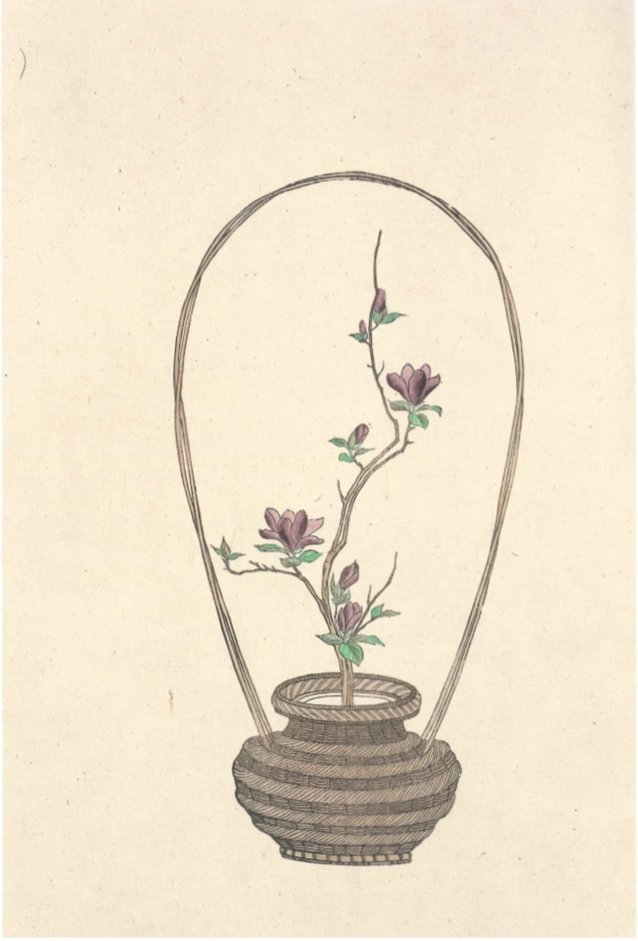Frida Hansen (1855-1931) wove the transparent portiere Hesteblomster (dandelions) in 1900, a door curtain that displays dandelions in all its life stages. Flower buds, full-blown yellow flowers, blowballs, and withered flowers are placed side by side together with leaves and stems, and in between the flowers, openings in the weft reveal the space behind the curtain. The surroundings' changing light and movements blend with the woven dandelions, emphasising the flowers’ changing nature and their steady, continuous growth.
The transparency technique arose from Frida Hansen’s experiments with the old Norwegian weaving technique on an upright standing loom. She had played an important role in the 1890’s weaving Renaissance, rediscovering old Norwegian weaving techniques and plant colouring recipes, and this provided the basis for her further explorations. Yet, she was criticised for not being Norwegian enough in her home country, due to her strong connections to European Art Nouveau and her various international influences. This affected the reception of her works. While Norwegian museums only collected a small number of her weavings, museums and collectors from abroad purchased many of her most important tapestries and transparent portieres. Today, Hesteblomster is a part of the collections at MAK – Museum für angewandte Kunst in Vienna, Austria.
Art Nouveau was an artistic style that revolved around the cherishing of nature, and it was heavily inspired by Charles Darwin’s evolutionary theory. This fused well with the view on nature seen in Japanese aesthetics, influences which became important in European art and culture after Japan opened its borders for trade in 1854. In a similar way to how evolutionary theory implied a recognition of how living beings are always changing and developing in relation to their surroundings, Japanese aesthetics also involved contemplation over a living being or an object’s changing nature.

Frida Hansen’s way of presenting dandelions is thus reminiscent of ikebana, the Japanese art of flower arrangement, where the goal is to “make flowers live”. Her flower ornaments consisting of dandelions in all its life stages resembles the Japanese way of capturing a flower’s “essence” through cutting it down so that all its life stages are present at once. The Japanese influence might also have inspired the development of Hansen’s transparency technique itself. Japanese bead curtains and katagami, cut-out paper stencils where paper and intervals create a dynamic interplay, might have presented her with the idea of creating open spaces and transparency in the weave. In Hesteblomster, the flowers “come alive” against the dynamic, airy background created by these many small openings.
In a similar way to how Darwin’s evolutionary theories suggested a reevaluation of nature’s mechanisms of change, and thus also man’s place in nature, Hesteblomster also renegotiated culturally constructed borders and boundaries. Through engaging with the concept of time and combining evolutionary theory, Japanese aesthetics, and Norwegian weaving traditions, Frida Hansen revealed previously hidden connections between people, nature and countries, as well as between the weave and its surroundings.
About the object:
Type of object: Transparent portiere
Materials: Wool weft on wool warp
Technique: Transparency weaving on an upright standing loom
Measurements: 257 x 159 cm
Date: 1900
Current location: MAK - Museum für angewandte Kunst, Wien. https://www.mak.at/
Created by: Frida Hansen, Det norske Billedvæveri
Continue reading:
Lexow, Adine. “Mellom blomster og blader: Hva Frida Hansen vevde inn i sine transparente portierer”. Master's thesis, Universitetet i Oslo, 2022.
Thue, Anniken. Frida Hansen: En europeer i norsk tekstilkunst omkring 1900. Oslo: Universitetsforlaget, 1986.
Thue, Anniken. "Frida Hansen". Norsk biografisk leksikon. https://nbl.snl.no/Frida_Hansen.
Ueland, Hanne Beate, ed. Frida Hansen: art nouveau i full blomst. Stavanger: Stavanger kunstmuseum MUST, 2015.
